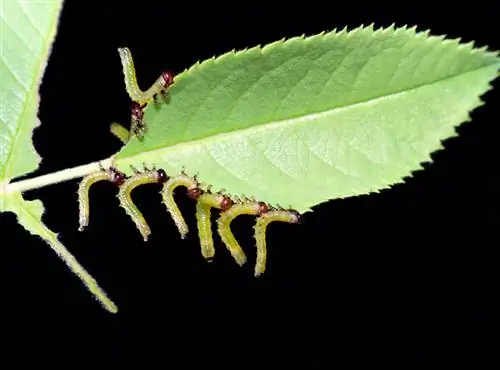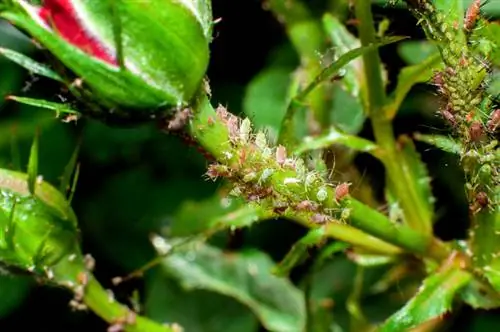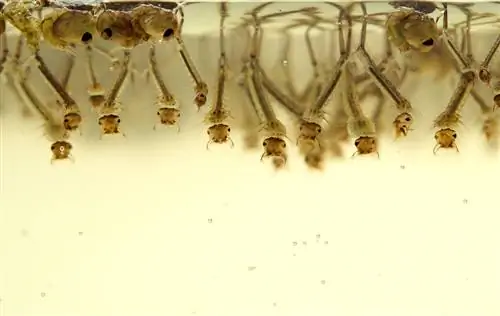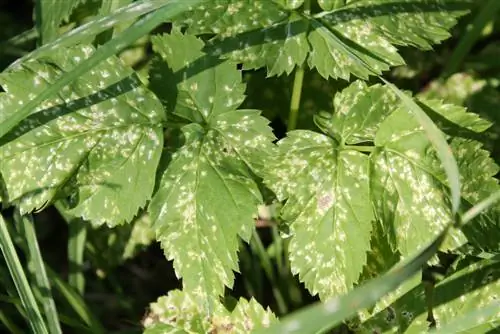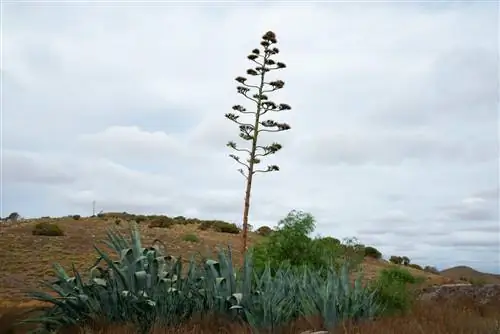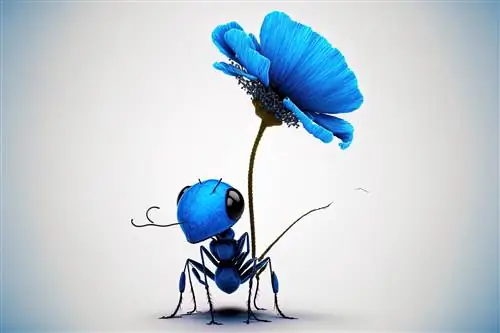- Author admin [email protected].
- Public 2023-12-16 16:46.
- Last modified 2025-01-23 11:20.
This tiny sawfly (Blennocampa pusilla), only about four millimeters in size, lays its eggs on the edges of the leaves, which then roll up protectively around the larva, yellow and fall off. Infected leaves should be collected and disposed of with household waste, as the larvae continue to develop on the compost.
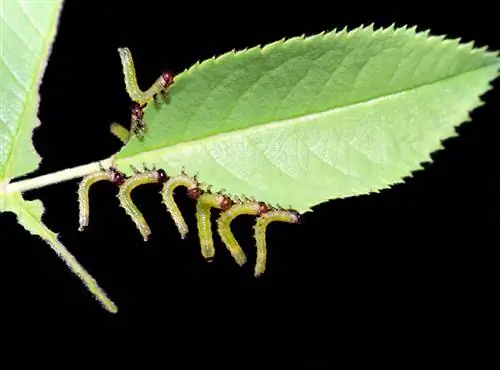
How can you combat the rose leaf wasp?
The rose leaf roller wasp can be controlled by removing infected leaves early and encouraging natural enemies such as birds and insects. If the infestation is severe, approved pesticides can be used. Avoid disposing of infected leaves in the compost.
Life cycle of the rose leaf wasp
Female rose leaf wasps lay their eggs on the edge of the rose petal, usually not laying more than two to three eggs per leaf. The adult then pierces the midrib of the leaf so that it curls up. The larvae hatch between April and June and eat the rose petals, causing them to die as a result of the damage and ultimately fall off. In autumn, the larvae bury themselves in the soil around the rose to pupate during the cold season. The next spring, new rose leaf wasps appear, which in turn lay eggs on the rose - the cycle begins again. Infected roses usually do not die, but they do look very unsightly.
Treatment and prevention
It is important to start treatment as early as possible to contain the spread. As soon as the leaves emerge in April, start carefully checking the rose petals regularly for signs of rolling.
Remove leaves
Infected leaves should be removed immediately.
- Cut them off directly on the rose bush.
- Don't leave a single curled leaf on the rose!
- It is better to remove one more leaf than too few.
- Use clean and sharp scissors.
- This should definitely be disinfected after use.
- Dispose of the clippings with household waste, never in the compost.
- The pest also continues to develop on the compost.
Encourage natural enemies
Fortunately, the rose leaf wasp has many natural enemies that, if the garden is managed in an animal-friendly manner, are happy to settle and fight the pest (as well as other rose pests). Birds in particular (especially the blue tit), but also hedgehogs, shrews and insects such as parasitic wasps, ground and soft beetles and spiders, like to eat the pest and thus help to contain an infestation in a completely natural way. However, the prerequisite is to design the garden close to nature.
- Place insect hotels near the roses.
- Small stone walls with holes in them also attract various beneficial insects.
- Hedgehogs and mice feel particularly comfortable in piles of leaves and brushwood.
- Feed the birds in winter, but stop feeding when the leaves begin to emerge.
Use pesticides only in very severe infestations
Natural farming also includes avoiding the use of pesticides as much as possible - these not only affect the pests, but also the desired livestock. This measure should only be considered if the rose leaf wasp infestation is very severe and cannot be contained in any other way. Ask specialist retailers for suitable and approved products, which can then be sprayed not only on the plant itself but also on the soil in late winter. The treatment is repeated in spring if you spray the underside of the leaves before they curl.
Tip
Holes in the rose petals, on the other hand, are an indication of an infestation with rose sawfly larvae.

